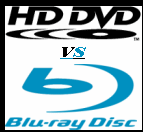
Joyce Ogirri
NCC News Reporter
Syracuse, NY
American grocery shoppers are paying more than ever for the basic staples like milk, bread, and cereal. Food prices increased more in the past year than at any time since the early 90s.
Joan Rohe lives on a diary farm and knows first hand what struggles farmer go through.
“The price of milk doesn’t scare me. It should go up to help the farmers out. You have to raise the milk prices,” said Shopper Joan Rohe.
In the last year, the average price of flour is up 40%, eggs are up 33%, and even beer has increased. Local grocers are looking for ways to cut back.
“We are price sensitive to everything that we but that comes in our door. We try to keep our margins consistently tight with the industry,” said Leah’s Big M owner Dan Hodgins.
The reason for increases economists say its higher energy process and transportation costs.
“Consumers have to retrench and kind of reallocate their budgets and see what they can afford,” said Economist Don Dutkowsky.
This is not just happening at the grocery store. Restaurants, taverns, and bakeries all over Syracuse are raising their prices, passing along their own higher cost of business.
At Empire Brewing Company in Armory Square, a pint of beer will cost you an extra 50 cents. Owners blame it on the rising cost of hops and malt, beer’s two main ingredients.
“We’re not going to gauge you, we’re just going to recover what we need to in order to make our business profitable,” said Brew Master Tim Butler.
On the city’s north side, family owned Columbus Bakery is coping with the soaring price of flour, which doubled what it was a year ago.
“It trickles down to the consumer and I have to raise my prices. I’m the bad guy, I don’t want to be,” said Owner Jimmy Retzos.
The restaurants are especially sensitive to higher food prices. Kevin Gentile serves up eclectic Italian cuisine at his little family owned restaurant on Burnet Avenue. He changes his complete menu four times a year.
“I’ve been in the restaurant business for 22 years. I have noticed more fluctuation in commodity items and prices of vegetables in the last two years than I’ve ever seen in my life, said Owner Kevin Gentile.
With a recession on the horizon, both consumers and business owners have to pay closer attention to their budget.
.jpg)































